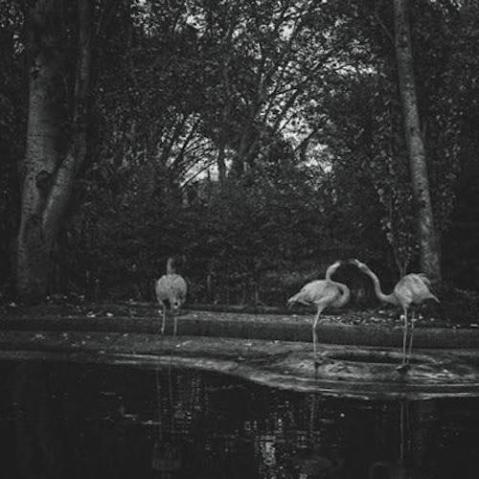Using the focus-and-recompose technique

Being able to use your auto-focusing points to hone in on your subject is incredibly useful, but it comes with a major flaw: it relies on your subject falling perfectly under one of the camera’s AF points, and this isn’t always the case.

As an example, let us say you were photographing a sweeping landscape and wanted a distant building that was very small in the frame to be your point of focus. If the position of the building doesn’t conveniently fall under an AF point, you have two choices.
The first is to focus on something that is roughly the same distance away from the camera as your subject—perhaps a tree near the building that happens to be under a focus point.
Second, you can physically move your camera so the currently selected AF point sits over your main subject (in this example, the tree) and then focus by half-pressing the shutter-release button. You can then lock the focus and recompose or reframe the image before you take your shot.
 If none of the AF points sit over the point that you want in focus, move the camera and lock the focus before recomposing the image and taking your shot.
If none of the AF points sit over the point that you want in focus, move the camera and lock the focus before recomposing the image and taking your shot.
Locking the focus can usually be achieved by either continuing to hold the shutter release in its half-pressed position while you reframe your shot (which can be awkward), or by pressing an Auto-focus Lock button on the camera (often marked AF-L). However, it’s important that the AF-L button only locks the focus, and doesn’t lock the exposure also. Most cameras do both by default, so when you recompose your shot the exposure may not be correct. You can usually prevent this from happening by customizing your camera—most have a menu option that will allow you to change the AF-L button so that only the focus is locked and not the exposure.
Or, you could try manual focusing. This will give you total control over what you focus on in your landscape image. This is not necessarily as easy as it sounds though as ironically, digital photography has actually made this harder than it used to be with SLR or SLR-style cameras. The reason for this is the design of modern auto-focus lenses and cameras, where manual focus is a decidedly secondary option.
Many lenses now have a physically narrow focusing ring that is not only hard to operate, but can shift the focus dramatically with the slightest turn. Distance scales on the lens (which give an indication of the distance the lens is focused at) aren’t always a feature, either, and long gone are the days when a camera contained a split/ microprism screen to help facilitate accurate focus. Because of this, manual focus should be approached with caution—it gives you full control, but the way in which it does this is no longer as precise or as easy as it once was.
Landscape Photography: The Four Seasons is Chris Gatcum’s gorgeous exploration of landscape photography season-by-season, outlining useful tools and techniques particular to the season as the qualities of light and colour—as well as the weather—change around you. This book will inspire you to get out and about, confident of achieving the best possible results—whatever conditions you’re shooting in.
 Landscape Photography: The Four Seasons
Landscape Photography: The Four Seasons
Chris Gatcum
Buy it now!
RRP for print edition: £11.99







